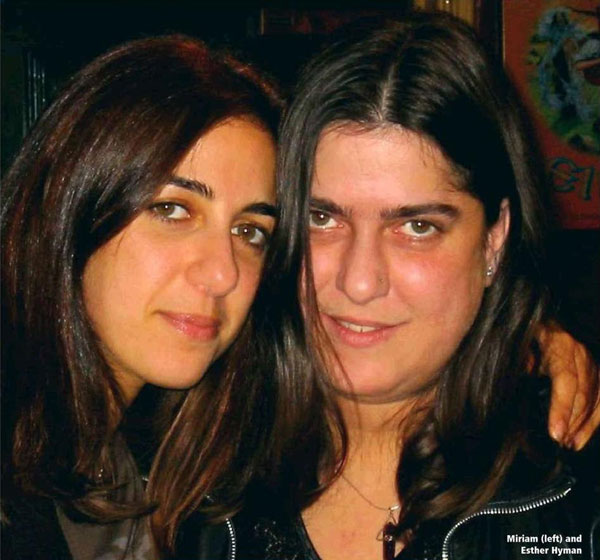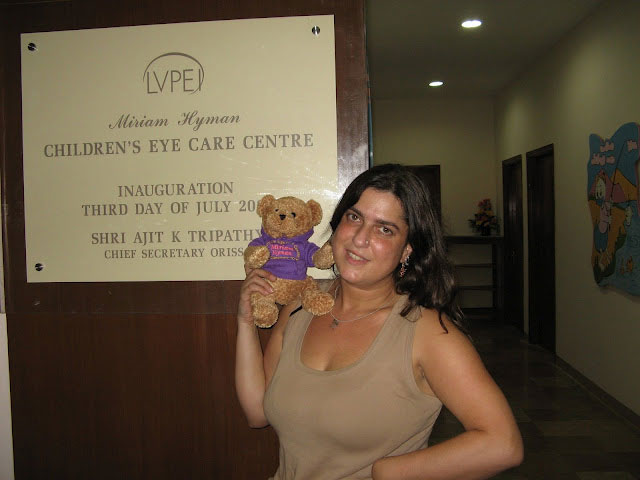Revolutionary Changes At The Community Level:
Love, Compassion And The Vision Of Miriam Hyman
By Colin Todhunter
21 August, 2012
Countercurrents.org
This is a story of how love can overcome hatred and compassion can overcome despair. It is also a story of a spirit of unity and fellowship that transcends national identity, culture or politics. It is an inspiring tale of how ordinary folk can work to bring about tangible change for the betterment of others who may be less fortunate.

July 7, 2005 will be etched in Esther Hyman’s memory forever. On that date, a bomb exploded on a bus in Tavistock Square, London and killed Esther’s sister Miriam. She was 32 years old. 700 people were injured and 52 were killed by a series of bombs planted on the London transport system by Mohammad Sidique Khan, Shehzad Tanweer, Germaine Lindsay and Hasib Hussain.
I got to speak with Esther in 2007. She told me that Miriam was her closest confidante and that their relationship was irreplaceable. She also said that after the bombings it would have been so easy for her and her family to have descended into a huge downward spiral. Instead of apportioning blame, though, Esther reached out to Muslim groups near her Oxford home. She wanted to make contact with them after the attacks to extend the hand of friendship and to make sure that they knew that she did not lay any blame with them as a community. Esther believes that many of the current problems in the world have come about because globally we are divided. Her belief is that if she can strive for unity then other people can do the same.
Her beliefs and fine words have been backed up by firm action over the last seven years. She and her family spent the first two years after the bombings keeping Miriam’s memory alive with a series of events. They were adamant that something positive could emerge from such a dreadful event and set up the Miriam Hyman Memorial Fund that supported ORBIS, an international charity for the prevention and treatment of blindness in the developing world.
Miriam studied the History of Art with French at University College London and went on to create many pastels, oils and silk paintings, and it therefore seemed only fitting that the Memorial Fund should set out to help the visually impaired.
As ORBIS has good links with India, in 2006 the Miriam Hyman Memorial Fund supported an eight-week ORBIS fellowship at Moorfields Eye Hospital, London, for Indian paediatric ophthalmologist, Dr Kuldeep Srivastava, who was head of the Children’s Eye Care Centre at Sadguru Netra Chikitsalaya (SNC) in Madhya Pradesh.
The fellowship enhanced Dr Srivastava’s ability to provide children’s eye care services, and he went on to provide training for colleagues in the skills he acquired in London.

Esther at the inauguration of Miriam Hyman Children’s Eye Care Centre
Since then, things have certainly moved on via various fund-raising events; so much so that on July 3 2008 the newly built Miriam Hyman Children’s Eye Care Centre (MHCECC) officially opened in Bhubaneswar, Orissa (India).
At the time of the opening, Esther said, “Through the Miriam Hyman Memorial Trust (no longer ‘Fund’), we have made something positive come out of the events of 7/7, which is a fitting legacy for my sister, a woman who was so positive herself.”
Over £70,000 had been raised by the trust come 2008, which was used to fund high-quality, comprehensive eye care for children attending the centre, irrespective of their ability to pay. State-of-the-art surgical facilities as well as specialist paediatric teams are now also available to the children.
The trust continues to fund raise and increase awareness of the high incidence of avoidable childhood blindness in developing countries. This is especially important for India, which has approximately eight million blind people; one million of those are under 16.
The MHCECC is part of the L V Prasad Eye Institute (LVPEI), which is a globally recognised Centre of Excellence. Esther and Miriam’s parents, Mavis and John Hyman, initiated the collaboration between the trust and the LVPEI. Mavis Hyman said at the time of the inauguration, “The MHCECC will be a living memorial to Miriam. This would have given great pleasure to Miriam who visited India twice with us. She felt a strong connection with the country and its people.”
The children at the centre are now experiencing an improvement in their quality of life and life chances as early diagnosis and treatment of many conditions can often significantly reduce the debilitating effects of visual impairment.
Esther believes Miriam sowed seeds during her lifetime and that she left her family the responsibility of nurturing those seeds and helping them to flourish. While the trust may not be able to change world politics, it is in some ways a symbol of reconciliation, global unity and forgiveness. Most important of all, it is bringing about positive change and impacting the lives of many poor children, especially important when you consider that there is no other paediatric eye care facility in the state of Orissa, where the population is approximately 50 million and that more than 50 per cent of childhood blindness is preventable and treatable.
Since the centre’s inauguration, there have been 37,300 outpatient appointments. The MHCECC is already making a significant impact on prevention and treatment of eye conditions and rehabilitation of patients. It will continue to do so for thousands of children who would otherwise have little access to eye care.
http://www.miriam-hyman.com/index.html
Colin Todhunter : Originally from the northwest of England, Colin Todhunter has spent many years in India. He has written extensively for the Deccan Herald (the Bangalore-based broadsheet), New Indian Express and Morning Star (Britain). His articles have also appeared in various other newspapers, journals and books. His East by Northwest website is at: http://colintodhunter.blogspot.com
Comments are moderated


